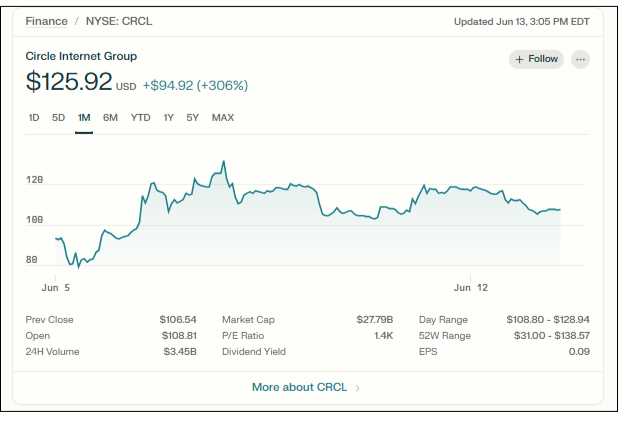It feels like only yesterday that a conversation about Ethereum in a traditional finance setting would get you politely escorted from the room. The asset was a paradox: a world computer that few understood, powering a digital-native economy that many dismissed. For years, the narrative felt stuck, toggling between the esoteric promise of smart contracts and the speculative frenzy of ICOs and NFTs. Today, however, something is different. The ground beneath our feet is shifting, and the whisper network of research forums and developer calls is now broadcasting a clear, institutional-grade signal.
The most visible change, of course, has been the lackluster, then accelerating, embrace of spot Ethereum ETFs. After a period of regulatory limbo that felt interminable, their approval and launch have begun to change the composition of the market. While initial flows were more subdued than their Bitcoin counterparts, we are seeing a steady accumulation that speaks to a different kind of buyer. These are not the retail tourists of 2021. This is the slow, methodical grind of allocation from wealth managers and family offices finally granted a regulated, physically backed vehicle. The daily net inflows are becoming a quiet drumbeat, signaling the start of a long process of portfolio rebalancing that has only just begun.
This on-ramp is critical, but the story runs deeper than a new ticker symbol. We are witnessing the “financialization” of Ethereum extend directly onto corporate balance sheets. Consider SharpLink Gaming, a Nasdaq-listed iGaming technology company (ticker: SBET). The company recently diversified its treasury, acquiring nearly half a million dollars worth of ETH to power the product development and growth of its new blockchain-based affiliate marketing network. This is not speculation; it is integration. It treats a digital asset not as an exotic punt but as a functional component of a corporate treasury strategy. This is a subtle but profound validation, moving ETH into the same consideration set as other strategic assets.
Parallel to this, the impending Circle IPO is serving as a massive proxy vote on the stablecoin ecosystem, which is overwhelmingly built on Ethereum. An IPO of this magnitude forces the underwriters and the institutional buyers to conduct deep diligence not just on Circle's business model, but on the resilience and primacy of the network where its core product, USDC, lives and breathes. A successful public offering for Circle is an implicit long for Ethereum. It confirms investor demand for exposure to the digital dollar economy, an economy whose primary settlement layer processed over $3 trillion in stablecoin volume last year alone.
While capital markets are adapting, the network itself is far from static. The frothy transaction volumes of the 2021 NFT mania once seemed like a fever dream, but a look under the hood reveals a surprisingly durable level of activity. This isn't a speculative echo; it's a new baseline. Driven by a more diverse set of applications, from DeFi to DePIN, Ethereum and its constellation of Layer 2s are posting daily transaction counts that rival those peak periods. This sustained usage is now supported by a major technical achievement: the successful launch of the Pectra upgrade last month in May. This was not a minor patch. It was a complex fork that further enhanced the network’s capabilities, notably by activating EIP-3074 to vastly improve user wallet functionality. Successfully shipping Pectra was a powerful signal, proving the developer community can execute on its ambitious roadmap and significantly de-risking the technical path forward.
Perhaps the most significant headwind, regulation, is finally showing signs of turning into a tailwind. The antagonistic tone that characterized the SEC’s stance for years is softening. The prior enforcement action against Kraken for its staking services cast a long shadow, effectively precluding a staking component in the initial wave of ETFs. Yet, the political charades in Washington appear to be changing. The passage of the Financial Innovation and Technology for the 21st Century Act (FIT21) through the House signals a bipartisan desire for clear rules. While its Senate path is uncertain, the conversation has fundamentally shifted from whether crypto should be regulated to how. We believe it is a matter of when, not if, regulated ETH staking products become available to U.S. investors, unlocking a crucial source of native yield that makes the asset dramatically more attractive from a total return perspective.
All these threads—financial products, corporate adoption, technical maturation, and regulatory clarity—are weaving together to prepare the ground for the ultimate prize: real-world, enterprise-level adoption. Reports continue to surface about the ambitions of giants like Walmart and Amazon to leverage stablecoins for payments and treasury management. Their scale is immense. For them, a public blockchain is not a novelty; it is a potential path to disintermediating costly payment rails and accessing a global, programmable, 24/7 financial system. They will not build this on a network they deem insecure, unstable, or lacking a robust developer community. They will build it on the network that has become the institutional standard.
For years, the investment case for Ethereum required a healthy dose of imagination. One had to look past the complexity and the volatility to see the future. That is no longer the case. The evidence is now in the fund flows, the corporate filings, the transaction logs, and the legislative drafts. The narrative is catching up with a reality that has been patiently building, block by block. The consensus is still pricing the memory of what Ethereum was, not the reality of what it is becoming.
Resources:
Matthew Mousa is Director of Strategy and Research at Alpha Transform Holdings, where he drives insights at the intersection of blockchain, crypto, and AI. He’s also the host of the Alpha Liquid Podcast, spotlighting innovators and trends shaping the digital asset landscape. With a background in investment banking and portfolio valuation, Mousa brings a sharp, strategic lens to emerging technologies and market dynamics. Follow Mousa on X and LinkedIn.
©Alpha Transform Holdings | Disclaimer | Privacy Policy









